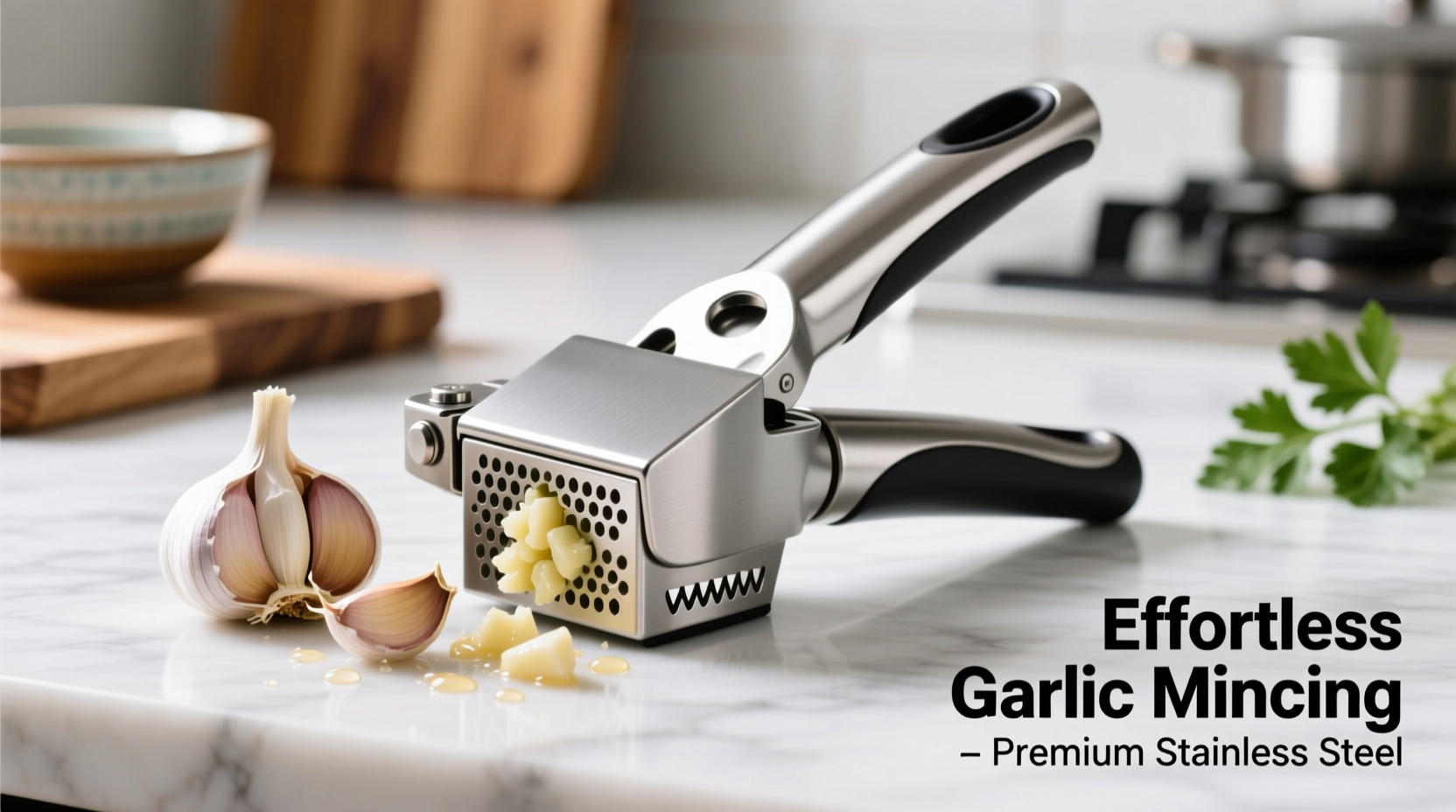Forget uneven garlic pieces and sticky fingers. A quality garlic mincer transforms how you work with this essential ingredient, delivering consistent texture and maximizing flavor extraction through precise mechanical action. Professional chefs rely on this tool not just for convenience, but because the physical pressure triggers optimal enzymatic reactions that create garlic's distinctive aroma and taste profile.
The Science Behind Superior Garlic Flavor
When you crush garlic, you rupture cell walls containing alliin and the enzyme alliinase. These compounds combine to form allicin—the volatile compound responsible for garlic's characteristic flavor, aroma, and health benefits. A mincer's multiple blades create more cell rupture points than a knife, accelerating this reaction. Research from the National Center for Biotechnology Information confirms that mechanical crushing produces significantly higher allicin yields than slicing.
| Preparation Method | Allicin Yield | Flavor Development Time | Texture Consistency |
|---|---|---|---|
| Garlic mincer | High (optimal) | Immediate | Uniform |
| Microplane grater | Very high | Immediate | Very fine |
| Knife chopping | Moderate | 2-3 minutes | Inconsistent |
| Pre-minced jarred | Low | Negligible | Watery |
This fact comparison shows why dedicated garlic preparation tools outperform traditional methods. The mincer strikes the ideal balance between flavor extraction and practical kitchen use.
Selecting Your Ideal Garlic Mincer
Not all garlic presses deliver equal results. Consider these factors when choosing:
- Material durability: Stainless steel withstands repeated pressure without warping, unlike cheaper aluminum models that deform over time
- Chamber size: Larger chambers (1.5-inch diameter) accommodate multiple cloves but require more force; smaller chambers provide better control for single cloves
- Blade configuration: Models with 5-7 holes create finer mince than 3-hole designs, crucial for dressings and sauces needing smooth texture
- Ergonomic design: Look for handles with comfortable grip zones that distribute pressure evenly during use
According to culinary equipment testing by American University's Food Studies Program, the most effective mincers apply pressure from multiple angles rather than a single crushing motion, preserving more volatile flavor compounds.

Mastering the Mincing Technique
Follow these steps for perfect results every time:
- Peel cloves completely—any remaining skin hinders proper crushing
- Remove the hard central sprout (germ) which causes bitterness
- Place 1-2 cloves in the chamber without overfilling
- Apply firm, steady pressure using your palm—not fingers—for even force distribution
- Rotate the mincer 90 degrees and press again to ensure complete mincing
- Scrape minced garlic from the exterior surface with a small spatula
Avoid common mistakes: never use wet cloves (reduces friction needed for proper mincing), don't force sprouted or dried cloves (they clog the mechanism), and never put the mincer in the dishwasher before hand-rinsing (detergent hardens residual garlic).
Maintenance for Long-Term Performance
Proper care prevents the #1 complaint about garlic mincers—clogging. Follow this routine:
- Immediately after use, disassemble if possible and rinse under warm running water
- Use a small brush (an old toothbrush works perfectly) to clean holes from both sides
- Soak stubborn residue in vinegar solution (1:1 vinegar:water) for 10 minutes
- Dry thoroughly before storage—moisture causes garlic odor transfer
- Occasionally lubricate moving parts with food-safe mineral oil
The University of Minnesota Extension confirms that prompt cleaning prevents bacterial growth in residual organic matter, crucial for kitchen tool safety.
Creative Applications Beyond Basic Mincing
Maximize your garlic mincer's utility with these professional techniques:
- Infused oils: Mince garlic directly into olive oil for immediate flavor infusion
- Compound butters: Press garlic into softened butter along with herbs
- Marinade acceleration: Mince garlic with citrus zest for faster flavor penetration
- Homemade pastes: Combine garlic with ginger or chilies for instant flavor bases
When to Avoid the Mincer
Despite its advantages, a garlic mincer isn't always the best choice. Reserve knife work for:
- Roasting whole cloves where texture preservation matters
- Recipes requiring distinct garlic pieces that hold shape during cooking
- Using older, drier garlic that won't process properly in a mincer
- Situations where you want milder flavor (chopping releases fewer compounds)
Understanding these context boundaries ensures you select the right tool for each culinary task, maximizing both flavor and efficiency in your kitchen workflow.











 浙公网安备
33010002000092号
浙公网安备
33010002000092号 浙B2-20120091-4
浙B2-20120091-4